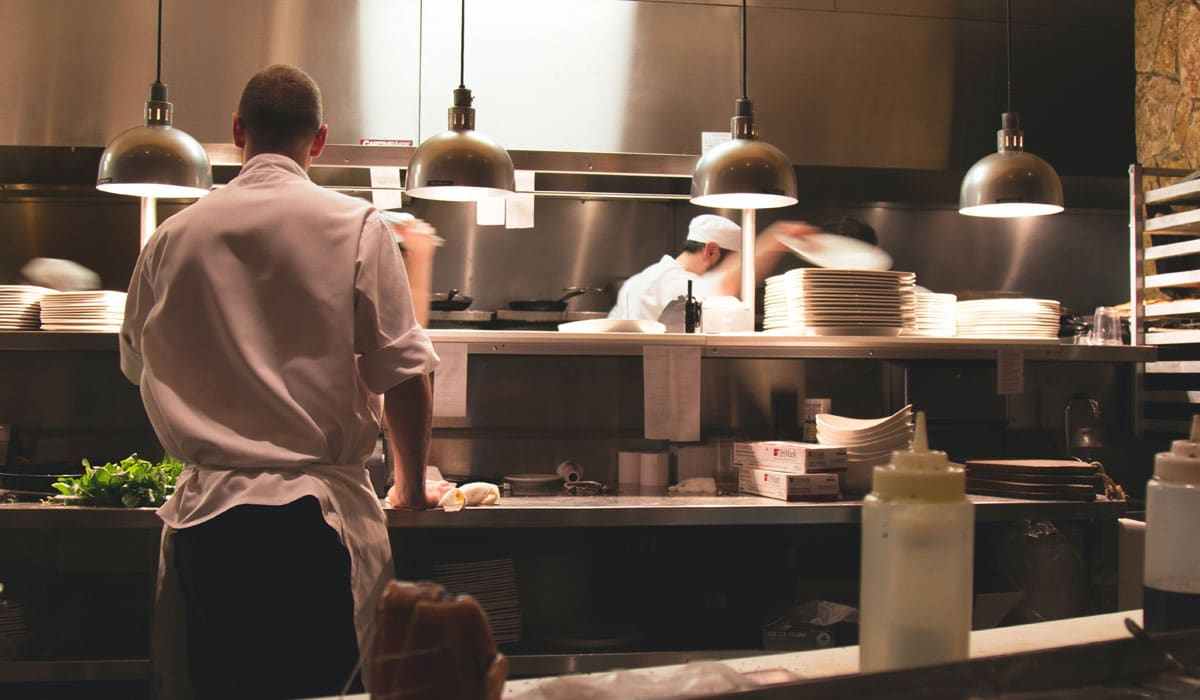Despite a historical love/hate relationship between restaurants and traditional hospitality technology, the pandemic forced accelerated adoption of various technologies to keep both customers and staff safe and businesses afloat. While much of this innovation has been focused on front-of-house operations, such as contactless ordering and payments platforms, QR menu codes, delivery companies, even food-running robots, it has often come at a great cost to bottom-line margins.
As COVID numbers continue to fluctuate, fast-casual and quick-serve businesses are still forced to deal with underlying industry challenges, most notably, the current labor shortage that doesn’t appear to have an end in sight. Operators in the already tightly margined industry are looking to technology for ways to do more with existing staff without further losses.
One such area is looking at the amount of time back-of-house teams spend procuring supplies, not to mention the inevitable profit-erroding errors and waste associated with the process. Independent restaurants order from four to eight unique suppliers on a constant, nearly daily basis, each with their own methods and logins. To help streamline this, every major foodservice distributor is investing heavily in digital, specifically online ordering and payments. However, many of these whitelabeled digital solutions are not being designed with the independent restaurant in mind and ultimately put an added strain on operators.
This time-consuming, multi-step process on a per supplier basis involves ordering, receiving, coding, expense tracking, and accounting, which is often spread across various staff members resulting in miscommunication, errors, and food waste. Multiple locations only further complicate the ordering task for those responsible. Thus, these single-use applications require operators to log in and place orders for a discrete set of supplies and then repeat the same process online, over the phone, or via SMS and email communication with each individual distributor for the remaining supplies. Simply digitizing one aspect of a multi-vendor, multi-step process doesn’t meaningfully contribute to significant time or cost savings.
In the heart of Silicon Valley, a rapidly growing fast-casual chain, Coupa Cafe, found itself overwhelmed by the unnecessary overhead of ordering supplies for their 10 locations. Co-founder Jean Paul Coupal (“JP”) was frustrated by the old-fashioned way of ordering supplies for his cafes.
“When we first started with a single location, ordering all my supplies was a painful experience. It took way more effort than it should have and having so many different ways to order for each vendor created a lot of confusion and costly mistakes. We are all connected to the internet 24/7 from lots of different devices, but when you are trying to order across phone, text, and emails, mistakes are going to happen,” says JP.
As the Coupa team began to open more locations, the problems compounded as multiple managers took on ordering responsibilities. In addition, JP’s mission for Coupa was to support local, organic, sustainable, and family-run farms. This noble goal also forced Coupa to add additional vendors to support their societal goals. As an owner operator, JP did not have an efficient way outside of calling everyone each day or logging into multiple systems to make sure the right orders had been placed on time. JP and the team began searching for a solution, “Here I am in Silicon Valley, and I’ve got 15 people ordering supplies the same way that my grandfather would have ordered stuff, plus the texting. I knew there must be a better way to do this.”
JP did some research and discovered several new technologies that allow restaurants to order any product from any supplier in a single, digital app. Implementing a unified digital ordering system has dramatically streamlined his back-of-house ordering, receiving, and payment process, resulting in far less errors and waste, in addition to hundreds of hours and thousands of dollars saved per year.
As Coupa Cafe continues its hypergrowth, they’re confident that one issue they won’t have to worry about scaling at their pace is ordering supplies. “I don’t think that most owners know how much time they are wasting with ordering the old-fashioned way,” JP notes. “You’re just giving yourself gray hair and throwing money away. My recommendation to any owner-operator is to adopt a unified digital ordering platform and you will see the same benefits I have.”
Larry Oberkfell, International Foodservice Manufacturers Association (IFMA) president and CEO, sees this shift happening as well, saying, “Technology is dramatically changing our industry in ways that we could have never imagined. Unified digital ordering platforms are a perfect example of solutions that are completely changing the paradigm on how foodservice operators and suppliers work together. Suppliers can now interact directly with restaurants and other operators seamlessly.”
As the industry soldiers along the bumpy and uncertain path of recovery, learning from and implementing strategies that have helped other operators survive and thrive is one way to optimize for success in both the near and longer term.
Warner Siebert is SVP Sales & Marketing for Cut+Dry. He is an entrepreneur and seasoned sales and marketing leader in the food, beverage, and hospitality industries. He has first-hand restaurant operating experience, has created numerous marketing programs for restaurants while working at iHeartMedia, and was previously Co-Founder & CEO of a restaurant software company, BuzzTable, which was acquired by Sysco. At Sysco, Warner developed a scalable, virtual sales model that brought Sysco’s restaurant technology division, CAKE, to profitability and also worked within Sysco LABS to apply new, digital go-to-market strategies to Sysco’s core business. At Cut+Dry, Warner is responsible for acquiring new restaurant and supplier partners.











